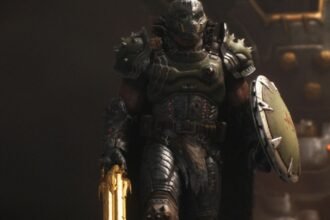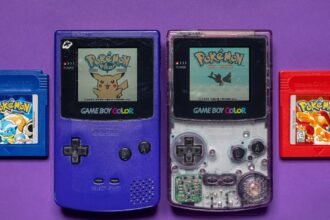Mental health struggles are a central theme in Brandon Sanderson’s epic fantasy series, *The Stormlight Archive*. While the protagonists battle hostile forces and a god intent on controlling the entire cosmere, they must also grapple with their own issues—such as depression, imposter syndrome, and repressed memories—to evolve and acquire new magical abilities. Interestingly, it’s not just the characters who require therapy; even the sentient swords in the series benefit from it.
The *Stormlight Archive* unfolds on the war-torn world of Roshar, where formidable warriors wield enormous swords called Shardblades. Shardbearers can summon these six-foot blades from mist, turning the tide of battle by slicing through anything in their way. Princes engage in duels to showcase their skills and earn the right to wield these legendary weapons.
However, Shardblades are even more fascinating than they seem. They are the physical embodiments of spren—sentient shards of the gods Honor and Cultivation—that bond with humans, granting extraordinary abilities like healing, flight, and illusion creation. Tragically, this bond was severed when humans abandoned their blades, an act that traumatized the spren and trapped them in the form of weapons. In the Cognitive Realm, these spren are depicted as wandering with their eyes scratched out, existing in a state of catatonia.
At the beginning of the series, Prince Adolin Kholin is blissfully unaware of this complicated history; he simply enjoys dueling with his Shardblade. As the narrative progresses and his friends bond with new spren, Adolin begins to feel overshadowed. His father encourages him to set aside his lifeless blade in hopes of attracting a living spren, but he is reluctant to abandon it.
Instead, he starts conversing with his blade, imagining it can hear him. Surprisingly, it does. Through determination, Adolin reaches out to Mayalaran, who shares her name and thoughts with him. This newfound connection allows him to summon the blade more swiftly, and in the Cognitive Realm, Maya not only follows him but also joins him in battle, eventually regaining her voice. Her healing is made possible by their bond; she then reaches out to other spren who have similarly been perceived as irreparably damaged, uniting them to assist Adolin and his allies. Together, they forge a new kind of connection that redistributes the power dynamics between humans and spren.
Sanderson further delves into the theme of communicating with those deemed unreachable through Adolin’s friend Kaladin, a former surgeon’s apprentice who evolves into a legendary soldier. Adolin supports Kaladin as he struggles with depression and PTSD, and Kaladin finds purpose in guiding others, realizing that traditional medical practices often isolate the mentally ill in dark rooms. He initiates group therapy to aid fellow soldiers, achieving such success that he is tasked with helping Szeth, a devastatingly skilled warrior and assassin plagued by a history of abuse and self-hatred.
Though Kaladin initially finds it difficult to connect with Szeth, his extensive efforts eventually enable him to help Szeth manage his intrusive thoughts. However, Szeth isn’t the only one in need of healing; his sentient sword, Nightblood, also learns valuable lessons.









